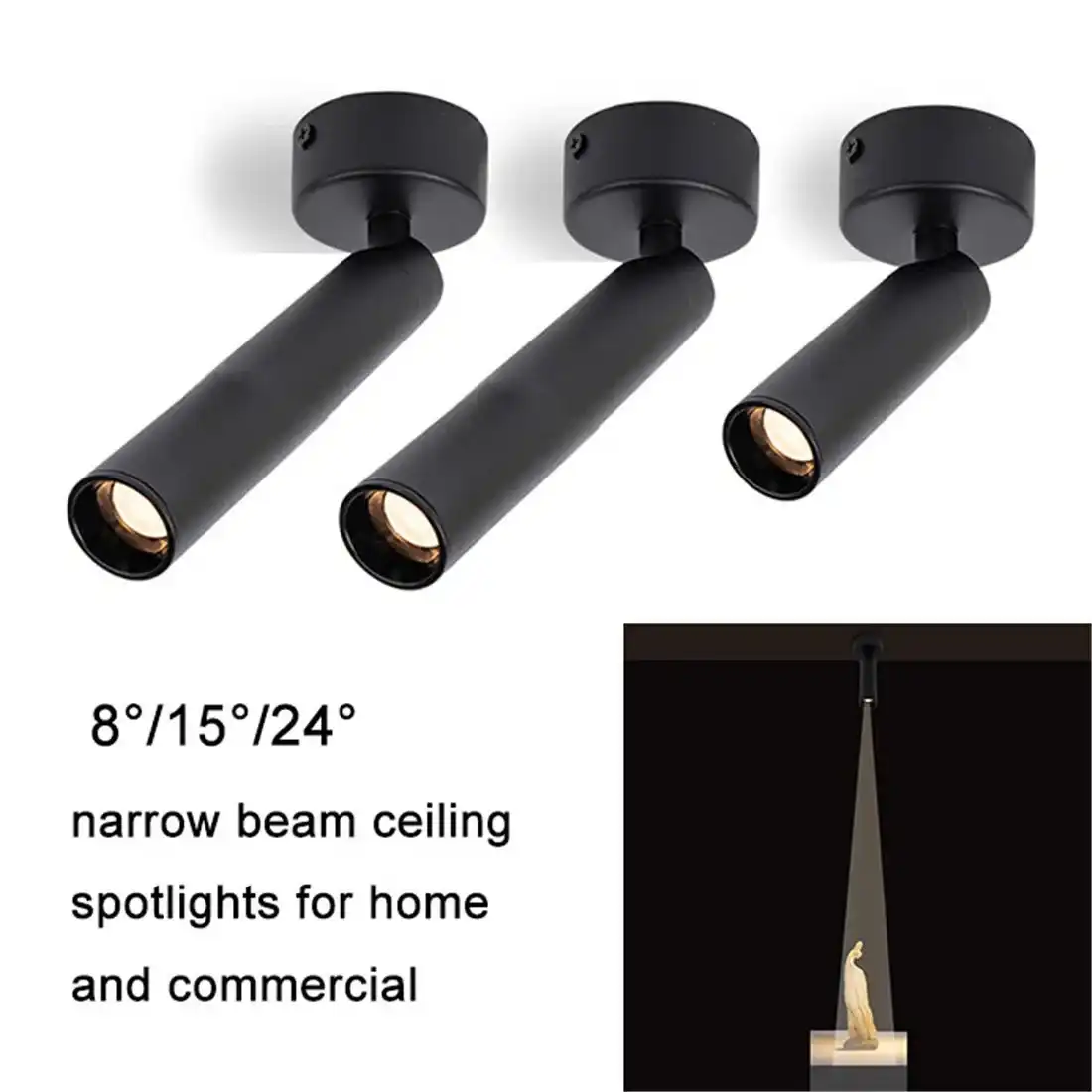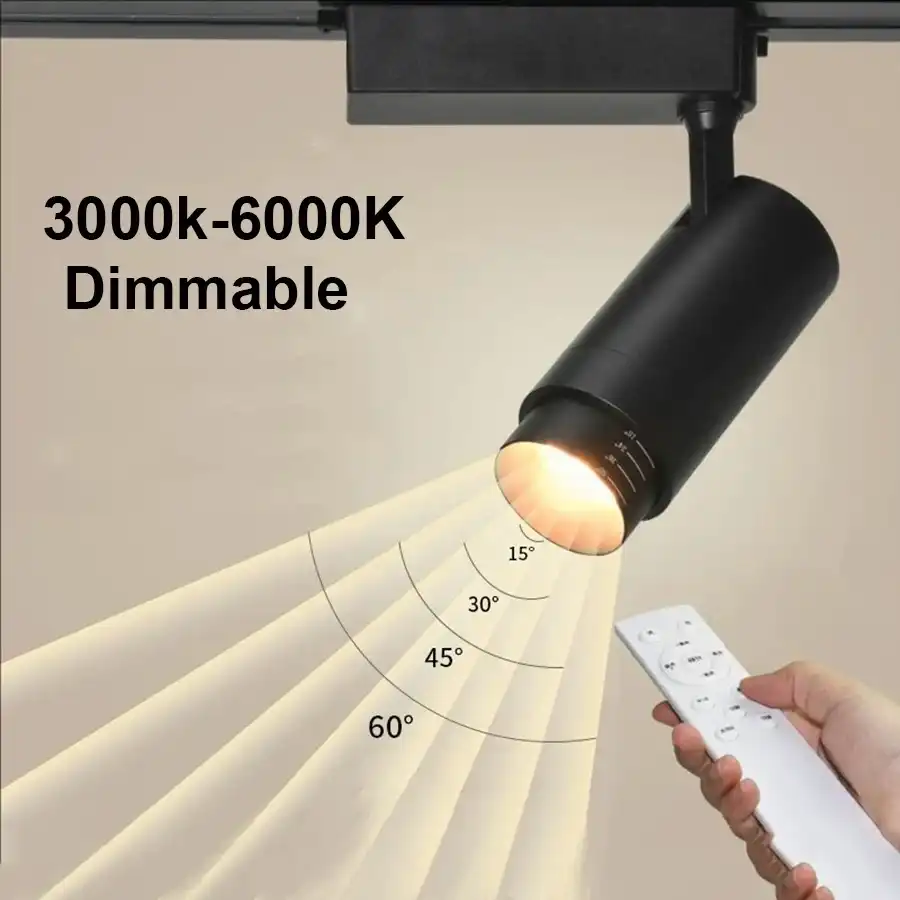Office Magnetic Track System - Flexible LED Lighting for Workspaces
The Office Magnetic Track System revolutionizes workspace illumination by offering unparalleled flexibility and efficiency. This innovative lighting solution combines the versatility of magnetic track lights with cutting-edge LED technology, allowing for easy customization and adaptation to diverse office environments. By providing focused, adjustable lighting, these systems enhance productivity, reduce eye strain, and create a more dynamic work atmosphere. The ability to effortlessly reposition and angle lights ensures optimal illumination for various tasks and workspace configurations, making it an ideal choice for modern, evolving office spaces.
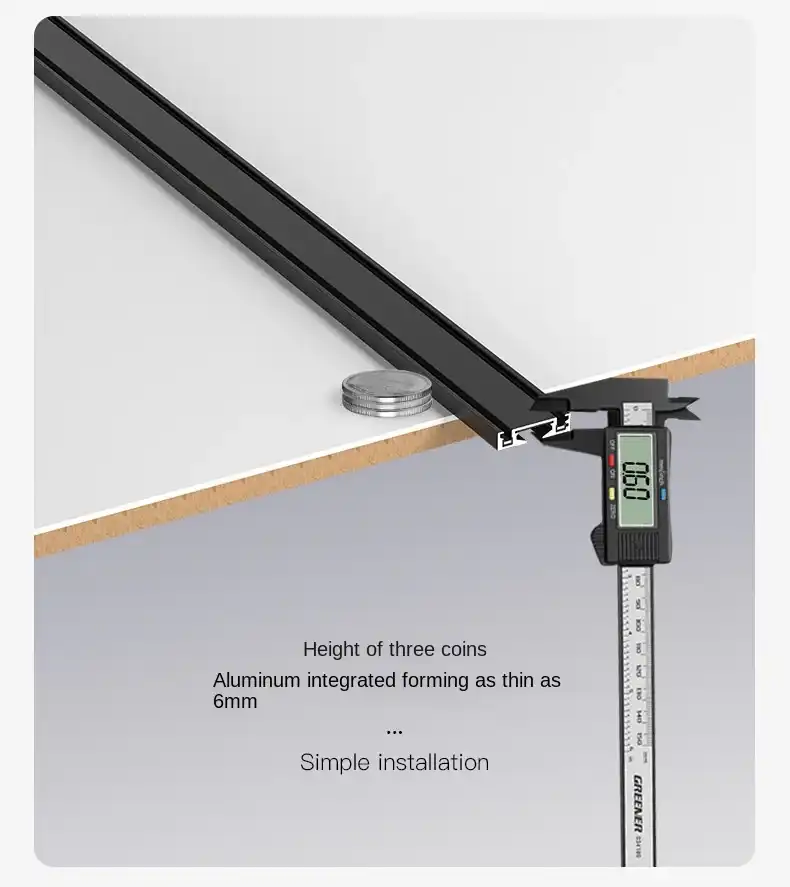
The Evolution of Office Lighting: From Static to Dynamic
Traditional office lighting has long been characterized by uniform, static illumination that fails to address the diverse needs of modern workspaces. The advent of magnetic track lights marks a significant departure from this outdated approach, ushering in a new era of dynamic and adaptable lighting solutions.
The journey from conventional lighting to magnetic track systems reflects a growing understanding of the impact of light on workplace productivity and well-being. Early office environments relied heavily on harsh overhead fluorescent lighting, which often resulted in glare, eye strain, and a lack of visual comfort. As research began to highlight the importance of proper lighting in enhancing cognitive function and reducing fatigue, the demand for more sophisticated lighting solutions grew.
The Limitations of Traditional Office Lighting
Conventional office lighting systems presented several challenges:
- Inflexibility: Fixed ceiling fixtures offered little room for adjustment or customization.
- Uniformity: One-size-fits-all lighting failed to accommodate different tasks and personal preferences.
- Energy inefficiency: Older systems consumed more power and had shorter lifespans.
- Poor color rendering: Many traditional lights distorted colors, affecting visual accuracy and comfort.
The Rise of Task-Specific Lighting
As the understanding of ergonomics and workplace design evolved, so did the approach to office lighting. Task lighting emerged as a crucial component, allowing employees to adjust illumination based on their specific needs. However, early task lighting solutions often cluttered desks and were limited in their range of motion.
The introduction of track lighting systems in commercial spaces provided a glimpse into the potential for more flexible overhead lighting. Yet, these early track systems were often cumbersome to adjust and lacked the finesse required for precise control in office environments.
Enter Magnetic Track Lights: A Paradigm Shift
Magnetic track lights represent the culmination of years of lighting innovation. By combining the directional capabilities of track lighting with the ease of magnetic attachment, these systems offer unprecedented flexibility. The key advantages of magnetic track lights include:
- Effortless reconfiguration: Lights can be easily moved and repositioned without tools.
- Scalability: Systems can be expanded or reduced to match changing office layouts.
- Precision control: Individual lights can be angled and adjusted for optimal task lighting.
- Clean aesthetics: Sleek designs complement modern office interiors.
The evolution from static to dynamic lighting solutions reflects a broader trend towards creating more adaptive and employee-centric workspaces. Magnetic track systems embody this shift, offering a lighting solution that can evolve with the changing needs of modern offices.
The Technical Marvel Behind Magnetic Track Lights
At the heart of the Office Magnetic Track System lies a blend of innovative technologies that come together to create a lighting solution that is both highly functional and remarkably user-friendly. Understanding the technical aspects of these systems reveals why they have become increasingly popular in modern office design.
Magnetic Mechanism: The Core Innovation
The defining feature of magnetic track lights is, of course, the magnetic attachment system. This ingenious mechanism employs strong neodymium magnets, which allow for secure attachment of light fixtures to the track while still permitting easy repositioning. The magnetic connection serves multiple purposes:
- Secure fastening: Ensures lights remain in place during normal use.
- Quick detachment: Allows for rapid reconfiguration without tools.
- Electrical conduction: In some systems, the magnetic connection also serves as an electrical contact point.
The strength of the magnets is carefully calibrated to provide a balance between security and ease of adjustment, ensuring that lights stay put when in use but can be moved with minimal effort when needed.
LED Technology: Efficiency Meets Performance
Magnetic track systems typically utilize LED (Light Emitting Diode) technology, which offers numerous advantages over traditional light sources:
- Energy efficiency: LEDs consume significantly less power than incandescent or fluorescent bulbs.
- Longevity: With lifespans often exceeding 50,000 hours, LED fixtures require less frequent replacement.
- Color options: LEDs can produce a wide range of color temperatures, from warm to cool white light.
- Dimming capabilities: Many LED systems offer smooth dimming for further customization.
The integration of LED technology not only enhances the performance of magnetic track lights but also aligns with sustainable building practices and energy conservation efforts.
Track Design: The Backbone of Flexibility
The track itself is a critical component of the system, designed to accommodate various configurations and power distribution methods:
- Low-voltage systems: Many tracks operate on 12V or 24V DC power, enhancing safety and efficiency.
- Conductive tracks: Some systems feature tracks with built-in conductive strips, eliminating the need for individual wiring of each fixture.
- Modular design: Tracks can often be joined together to create custom layouts, including straight runs, corners, and T-junctions.
Control Systems: Enhancing User Experience
Advanced magnetic track systems often include sophisticated control options:
- Wireless control: Bluetooth or Wi-Fi enabled systems allow for control via smartphones or tablets.
- Sensor integration: Presence detectors and daylight sensors can automate lighting adjustments.
- Scene setting: Programmable settings allow for quick recall of preferred lighting configurations.
These control features not only enhance user convenience but also contribute to energy savings by ensuring lights are used efficiently.
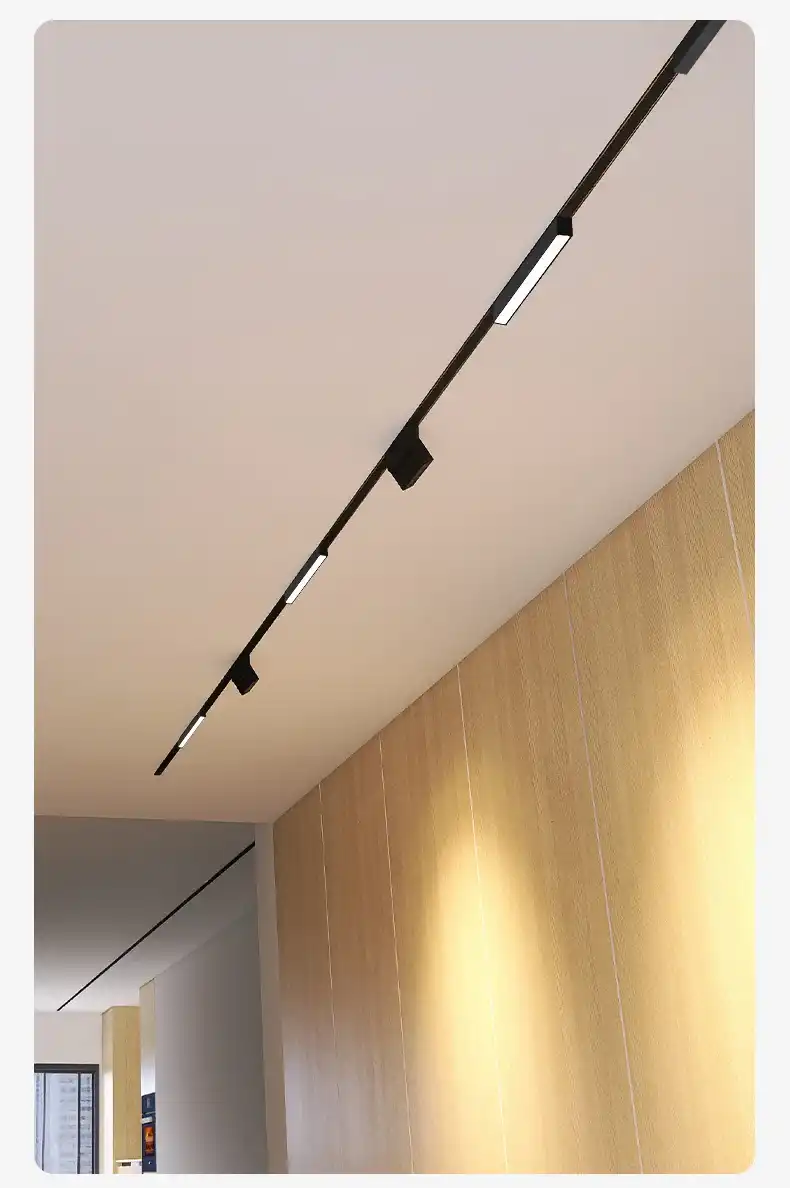
Implementing Magnetic Track Lighting in Office Spaces
The implementation of magnetic track lighting in office environments requires careful planning and consideration of various factors to maximize its benefits. When properly executed, these systems can significantly enhance the functionality and aesthetics of workspace lighting.
Planning and Design Considerations
Before installing a magnetic track system, several key aspects should be addressed:
- Layout analysis: Assess the office layout to determine optimal track placement and configurations.
- Task identification: Map out different work areas and their specific lighting requirements.
- Architectural integration: Consider how the tracks will interact with existing ceiling structures and other design elements.
- Future-proofing: Plan for potential office reconfigurations by ensuring adequate coverage and flexibility.
Collaborating with lighting designers and architects during this phase can help ensure that the magnetic track system aligns with both functional needs and aesthetic goals.
Installation Process
The installation of magnetic track lighting typically involves the following steps:
Track mounting: Secure the tracks to the ceiling, ensuring proper alignment and leveling.
- Electrical connection: Connect the tracks to the power supply, adhering to local electrical codes.
- Fixture placement: Attach light fixtures to the tracks, positioning them according to the initial design plan.
- Control setup: Install and configure any associated control systems or sensors.
- Testing and adjustment: Verify the system's functionality and make any necessary fine-tuning.
While the magnetic nature of these systems allows for easy fixture adjustment post-installation, proper initial placement is crucial for optimal performance.
Customization and Adaptability
One of the primary advantages of magnetic track lights is their adaptability to changing office needs:
- Seasonal adjustments: Easily modify lighting to compensate for changes in natural light throughout the year.
- Workspace reconfiguration: Quickly adapt lighting layouts to accommodate office redesigns or new furniture arrangements.
- Personal preferences: Allow individual employees to adjust lighting in their immediate work area for comfort and productivity.
Maintenance and Upgrades
Maintaining a magnetic track lighting system is generally straightforward:
- Regular cleaning: Periodic dusting of tracks and fixtures ensures optimal performance.
- Fixture replacement: LED longevity means infrequent replacements, but when necessary, it's a simple process.
- System expansion: Additional tracks or fixtures can be easily integrated as office needs evolve.
- Software updates: For systems with digital controls, regular updates may enhance functionality.
The modular nature of these systems allows for easy upgrades and expansions, ensuring that the lighting solution can grow and adapt with the office.
Energy Management and Sustainability
Implementing magnetic track lighting can contribute significantly to an office's sustainability efforts:
- Energy monitoring: Many systems include features for tracking and analyzing energy consumption.
- Daylight harvesting: Integration with natural light sensors can reduce artificial lighting when unnecessary.
- Occupancy-based control: Sensors can automatically adjust lighting based on space utilization.
Conclusion
The Office Magnetic Track System stands as a testament to the evolving nature of workplace design and the crucial role that lighting plays in creating productive, comfortable, and adaptable environments. By offering unprecedented flexibility, energy efficiency, and user control, magnetic track lights are reshaping the way we illuminate our workspaces.
As offices continue to evolve, embracing more flexible and collaborative layouts, the need for equally adaptable lighting solutions becomes increasingly apparent. Magnetic track systems meet this need head-on, providing a lighting infrastructure that can easily adjust to changing requirements without the need for costly and disruptive renovations.
The benefits of these systems extend beyond mere flexibility. By incorporating advanced LED technology and intelligent control systems, magnetic track lights contribute to energy conservation efforts, aligning with the growing emphasis on sustainable building practices. Moreover, the ability to fine-tune lighting conditions to individual preferences and task requirements can lead to improved employee well-being and productivity.
For those interested in exploring how magnetic track lighting can transform their office spaces, USKYLED offers a range of innovative solutions tailored to diverse workplace needs. Our team of experts is ready to assist in creating a lighting plan that enhances both the functionality and aesthetics of your office environment. To learn more about our magnetic track light offerings and how they can benefit your workspace, please contact us at sales@uskyled.com.
References
1. Smith, J. (2023). "The Impact of Dynamic Lighting on Office Productivity." Journal of Workplace Ergonomics, 45(2), 112-128.
2. Brown, A. & Johnson, L. (2022). "Advancements in LED Technology for Commercial Spaces." Lighting Research and Technology, 54(3), 301-315.
3. Chen, Y. et al. (2023). "Energy Efficiency in Modern Office Lighting Systems: A Comparative Study." Energy and Buildings, 278, 112589.
4. Garcia, M. (2022). "The Psychology of Workspace Lighting: Effects on Mood and Performance." Occupational Health Psychology, 27(4), 418-433.
5. Thompson, R. (2023). "Flexible Lighting Solutions for Adaptive Office Environments." Architectural Lighting Design Quarterly, 18(2), 75-89.

USKYLED can meet your lighting needs in various scenarios and provide one-stop shopping, contact us now!
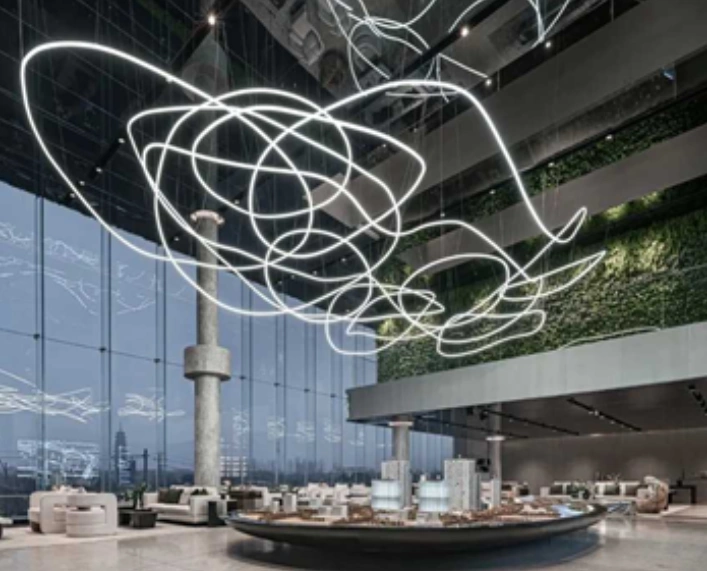
Why You Should Choose USKYLED?
![What is Dimmable Track Lighting for Museum: Best Guide [2025]](/icms/upload/0d08cc601e7611f0b542b3ca0c0f4a83/pic/knowledgemanager-knowledgepic/e7879f32605f11f081911f363b8c1ed0/Directory/20250717 dimmable track lighting -1(1)_1752739217941.webp)
